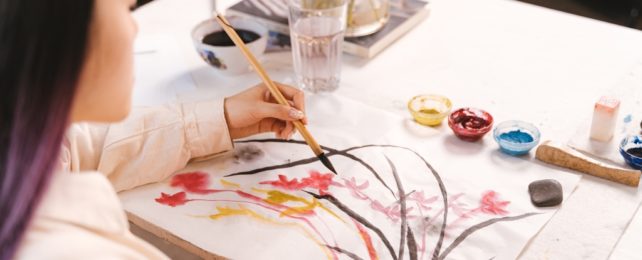Which hand you prefer to write, eat, and brush your teeth with shouldn't really matter in the grand scheme of things.
Yet scientists have been studying human handedness for over a century and discovered it can show a lot about how human brains can work differently.
And since creativity is a measure of how we think – and therefore lives in our brains – any evidence that left-handed people are more creative should be lurking somewhere in our neurocircuitry.
The brains of left-handed people differ from right-handers
It turns out, the brains of left-handed people do, in fact, differ from right-handed folks.
In particular, they display less brain lateralization than right-handers, said Eric Zillmer, a professor of neuropsychology at Drexel University.
Brain lateralization is the idea that the human brain is divided into two halves – the left and right hemispheres – with each half responsible for its own set of functions.
The left side is generally associated with speech, writing, arithmetic, language, and comprehension, while the right side controls creativity, musical skills, and artistic expression – to name just a few functions among many.
If a researcher sparked a conversation with you and scanned your brain with an fMRI in the process, the left hemisphere (linked with language) should light up more than the right half.
And that's what researchers have found for most right-handers – for tasks involving language, the left side of the brain is more active than the right half.
But scientists have found this isn't the case for most lefties.
Most left-handed people actually exhibit more activity in their right hemisphere for language tasks. Because lefties rely less on the left hemisphere, researchers describe this as displaying less brain lateralization, Zillmer said.
And it's not just language where lefty and righty brains diverge.
One 2010 study on handedness and face perception found that left-handers used both left and right regions of the brain when looking at faces. But for the right-handers in the study, recognizing faces was largely localized to the right side of the brain.
So what does this have to do with how creative you are?
Zillmer said these differences in brain lateralization may help left-handers think more outside the box and therefore have a more creative edge.
Creativity may come more easily for left-handed people
Perhaps some of the most convincing research linking handedness and creativity comes from studies of people with high levels of schizotypy – personality traits that resemble schizophrenia but are not as extreme.
In the early 2000s, multiple research groups found an intriguing link between highly creative people – such as professional musicians and visual artists – and high levels of schizotypy.
What's more, those with pronounced schizotypy also exhibited atypical brain lateralization where the right hemisphere was more active for tasks typically dominated by the left hemisphere – similar to what's been found in left-handed and ambidextrous folks.
So, if unusual brain lateralization is linked to higher creativity in people with high levels of schizotypy, then it's plausible to suggest left-handed people with less brain lateralization may also be more creative. Though, of course, more research is necessary to confirm that link more directly.
It's worth noting that the right hemisphere is involved in divergent thinking – the ability to creatively think of several unique solutions to a specific problem. So, if lefties are naturally prone to tapping that area of the brain more often, then it may potentially make creative right-brain problem-solving easier to access, Zillmer said.
The possibility that lefties are more creative could also be due in part to the way left-handed people are constantly having to adapt to a world designed for right-handers.
This offers opportunities for lefties to use their imaginations more often, which can help people foster creativity, said Katina Bajaj, a clinical psychology researcher and co-founder of the company Daydreamers.
"Our creative brain is utilized when we are engaging in new, unfamiliar experiences," Bajaj said. "Because left-handed people are constantly navigating a world that requires them to think differently, they have more practice using their imagination, which makes it easier to access over time."
So, ultimately, being left-handed doesn't automatically make you more creative, but as your brain develops and adapts, you may adopt a way of thinking that's more creative.
Why do left-handed people exist in the first place?
Researchers don't know exactly why about 10 percent of the population is left-handed. But some studies offer clues about how and when handedness is determined.
In one study, researchers found they could reasonably predict a child's hand preference by observing which hand they liked to move around in utero.
And a more recent study in 2020 found that handedness is at least partly inherited and may be determined by genetic factors.
But environmental factors can't be ignored, Zillmer said. For example, a child with a left-handed parent may become left-handed by imitation, regardless of which hand they preferred in the womb.
"It is most likely an expression of genes," Zillmer said. "But because of the plasticity of the brain, it is possible to change handedness with seemingly little effect."
And the same goes for creativity: "Some research indicates that some people are born with higher degrees of openness than others," Bajaj said. "From my perspective, creativity takes practice and continues to expand the more we cultivate it."
The bottom line: If you want to be more creative, practice. If you want to use your left hand more often, practice. Given enough willpower, your brain is yours to mold and manipulate.
This article was originally published by Business Insider.
More from Business Insider: